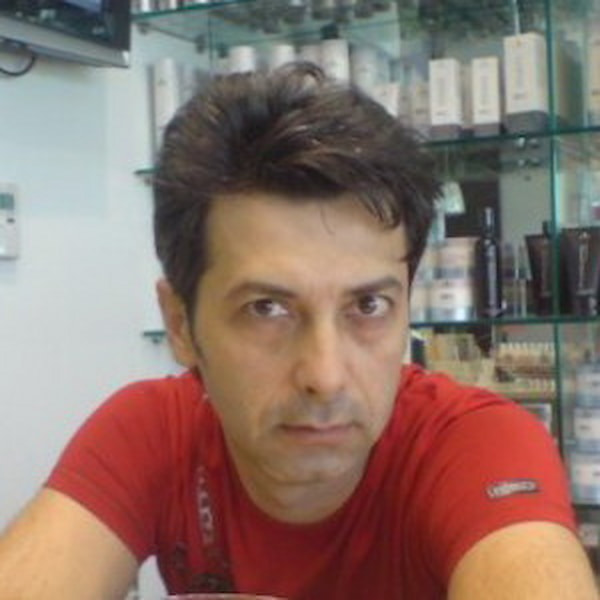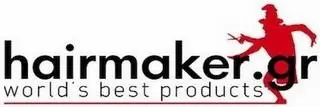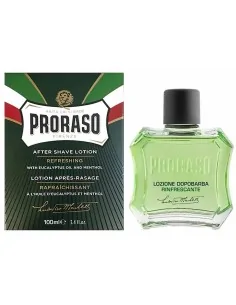- HairMaker.Gr
- Traditional Shaving
- 4 likes
- 5496 views
- 1 comments
- aftershave, Shaving, lotion
Learn the History of Aftershave lotion.
Times have changed. Traditional shaving has changed. But no traditional shaving process can be said to be complete without the application of an aftershave after shaving. Just like men have been doing for centuries, aftershave is the must have product for after the traditional shave. Or hasn't it always been that way?
First we will start with a report on what aftershave is , how aftershave was discovered and why a product which can be easily found in the market now has been pivotal to the course of history, was deemed a necessary product and saved many lives with its discovery until it became a must have product for the traditional shave.
What is aftershave?
Aftershave is a product that is applied to the face after shaving to soothe the skin. Traditionally it is an alcohol-based liquid (splash), but it can be a lotion, gel or even a paste.
It often contains an antiseptic agent such as alcohol usually ethyl , citrate stearate or ammonium nitrate to prevent infection due to cuts, and acts as an astringent to reduce skin irritation. Menthol is also used in some varieties to numb irritated skin.
Aftershave lotion has many benefits; it relieves irritation and prevents pimples commonly caused by shaving. The antiseptic solution prevents infections from abrasions and can kill microorganisms that may form on your razor during storage. The results of aftershave may vary slightly depending on the base, however it is a good and quick way to freshen up your face.
As a skincare product it is suitable for antiseptic facials after shaving. It comes in different forms and each form has its unique benefits. All types have an antiseptic liquid mixed in, usually ethyl alcohol that prevents infection and inflammation from shaving.
.jpg)
Early forms of AfterShave lotion.
In our previous articles we have mentioned that the practice of shaving the face is not a new invention as the need to remove the beards from the face was created many thousands of years ago. However, we cannot say the same for aftershave and many of you will take for granted the application of some aftershave lotion or cream. Unfortunately, the invention of early traditional shaving razors and razors does not necessarily coincide with the invention of aftershave.
The first reports we receive about forms of after shave antisepsis are found in Egypt, where shaving was regularly practiced not only for religious reasons but also for personal hygiene reasons, so the need for a moisturizing, soothing substance with antibacterial properties was great.
An early type of aftershave in the form of a cream with eucalyptus and antiseptic properties for after shaving appeared in Egypt at that time and greatly improved the lives of Egyptians by reducing deaths from some infection due to cutting.
A form of aftershave aimed at antisepsis seems to have existed in ancient Greece as well. In fact, in the barbershops of ancient Greece, a special soap was used exclusively for shaving and avoiding infection due to its properties.
The barbers of ancient Rome went one step further, creating an aftershave lotion where cobwebs were dipped in a container of olive oil and vinegar. Although it looks like a highly repulsive aftershave practice and most likely had a horrible smell, the barbers of that time promised safety and protection from disease. The options were few, the dangers many so this solution would probably necessarily have been common.
Of course, science , medicine and cosmetology were not aware at that time of the rapid advances of the last three centuries, especially the century we are living in, and so aftershave as a concept was not in the spotlight while deaths associated with shaving-related infections were not understood and were often attributed to other causes, even superstition.
The discovery of aftershave
Before the 18th century, the concept of applying a "product" to the skin after shaving simply did not exist. Shaving was a basic almost daily activity and was also probably a painful experience. Instead of shaving themselves, men visited the barber, whose services were available everywhere from large towns and small villages. Of course, the quality of shaving varied dramatically from barber to barber. It was certainly not unlikely that there was some application of a substance to soothe the skin after shaving, such as lavender water on the skin, but it was not a practice that was applied everywhere.
In the late 18th century, things began to change. Beards began to recede as a fashion and meant that shaving was not only becoming more common, but was beginning to be done by individuals, not just barbers.
The advent of new, sharper types of steel razor made this shaving experience more comfortable and also gave the market a new direction. While razor manufacturers saw opportunities to target men who shaved, perfumers and hairdressers began to create their own products for the traditional shave.
As shaving became fashionable, barbers realized that they had to do something to take care of the small abrasions due to shaving by using antiseptic at the end of the shave. They also wanted to pay special attention to their customers to keep them coming back, as the first attempts to create traditional razors and traditional shavers had begun.
We take a big leap in time and arrive at the 18th century, which is when the concept of 'after shaving, apply a scientifically tested substance rather than a random doctor's formula' was essentially applied. Already the barbers of the time were the target of satire for their clumsiness, at a time when stories of severed ears were becoming a joke in Europe.
The answer initially came from Budapest, where scientists created the first aftershave to not only disinfect but also improve the skin after shaving.
The Hungarians started experimenting with aftershave lotions, perfumes and scented waters. These methods prevailed and spread throughout Europe and America. By the end of the 18th century, no barber's shave was a complete aftershave.
France followed suit with pioneering physician and barber Jean-Jacques Perret proposing in 1791 the mandatory use of aftershave in his groundbreaking book "L'art du Barbier, et la Manière de se Raser Soi-Même".
Jean-Jacques Perret was responsible for teaching many men how to give themselves the perfect shave through his book, "The Art of Learning to Shave One". In that book he advocated the use of a cologne after shaving.
In 1801, an advertisement appeared in England for "Elenora's Lavo Cream" an after-shave cream that, according to its manufacturers, "dewed the skin and made it look younger". Across the Atlantic, namely in St. Louis, Missouri, an ambitious physician named Joseph Lister introduced a powerful antiseptic formula and his goal was to conquer the virgin aftershave market.
Aftershave lotion for aftershave became widely popular after the 19th century as a means of preventing infection. In the old days razor blades and traditional shavers were not as sharp as today's blades. So shaving was more painful and heavy.
Many irritations and cuts were to be expected when one went to the barber for a shave. Cuts could easily become inflamed and infected due to the unsanitary conditions of those times when no one knew about bacteria and sterilization. A bad shave could do more than just cut you. It could actually lead someone to death.
During the Victorian era, water-based essences such as rose water and water-based orange extract were used to mask odors and soothe the skin. But shaving infections were still a problem.
In 1822, Louis Pasteur discovered that the infections were caused by tiny life forms he called "germs" and that alcohol and certain other compounds seemed to neutralise them.
In 1830, the Hungarian Cavalry was in constant vigilance, spending many months in the field away from the care of the barbers, yet regulations required the men to be very regularly shaved. Skin infections and abrasions due to shaving were a big problem for them.
It was then that they contacted a well-known perfume and cologne manufacturer from Paris, Edouard Pinaud, to see if he could come up with something that would make life a little more pleasant for these hard-working soldiers. This resulted in the creation of one of the first, longest lasting and most loved men's aftershave lotions available on the market, called Lilac Vegetal.
It could be used both as a perfume and as an aftershave product, and was hugely successful, so much so that it is still in production today, over 150 years later. There are many who dispute the story, but the fact is that Napoleon III gave Pinaud the title of Royale Parfumer soon after, so Edouard must have been doing something respectable for the time. The rest of Europe soon followed suit and aftershave became very popular with men from all walks of life.
Myths about the use of aftershave lotion.
Surprisingly, aftershave has been blamed for all sorts of ailments. In 1963, a general practitioner (Dr B.E. Finch of London) wrote in the British Medical Journal, noting that several patients had reported symptoms of dizziness after shaving, akin to "slight drunkenness, similar to that which occurs after ingestion of an alcoholic drink".
In further research, Finch found that this was a common phenomenon and considered that alcohol-based after-shave was absorbed by the shaved skin, causing mild intoxication. A response in next month's edition suggested that, due to the highly volatile nature of these liquids, the problem was more likely to be fumes than absorption!
aftershave today
- Do we need aftershave?
If you shave, you should definitely use some kind of aftershave after shaving, aftershave lotion with or without alcohol.
Aftershave is essential and is used for exactly what the name says - to treat your skin after shaving.
The benefits of aftershave depend on what exactly it contains. But the traditional alcohol-based astringent aftershave has served as a disinfectant for the face after the traditional shaving of facial hair to this day.
When you shave, you often leave behind a lot of tiny cuts and the skin is exposed as well as skin pores.
The typical aftershave contains ingredients such as ethyl alcohol, a recipe that has been unchanged for centuries.
These ingredients kill bacteria or toxins on your face after shaving. This is why alcohol-based aftershave notoriously stings when you put it on your face is antibacterial.
Although many aftershave lotions are alcohol based, you should not forget that they also have a certain expiry date for the aftershave as they contain many ingredients that over time interact differently with the skin.
An alcohol-based aftershave usually causes a stinging sensation upon application after a traditional shave, with the effects sometimes lasting a few minutes, but usually only for seconds. There are also alcohol-free products available. Aftershave balms for aftershave are often recommended for winter use, as they tend to be alcohol-free and lotion-like, moisturizing the skin.
Also, another alternative is the alum plate or alum block , known for its antimicrobial and astringent properties.
Top 10 Aftershave lotion Brands.
6. Razorock
8. Furbo
9. Williams
10. Floid
Why do I need aftershave today?
The astringent properties can help kill acne-causing bacteria. Other ingredients, such as Aloe Vera and moisturizing agents, can help soothe the skin, prevent irritation and calm redness.
- Which aftershave should you use? Are there any alcohol-free aftershaves?
Fortunately today there are a plethora of products and alternatives to aftershave that use products
If you have very sensitive skin, avoid aftershaves that contain alcohol and, instead, look for products with amarole extract.
Amarole is a natural astringent that is less drying and doesn't sting upon application like alcohol aftershave It also works as an anti-inflammatory to soothe irritated skin.
- Another option is an aftershave with Tea Tree oil which, like amamelis, is a natural astringent and has antiseptic properties.
To conclude, for those who want or need to shave daily, like traditional shaving enthusiasts, aftershave has become an integral part of their lives. Its discovery and application has changed the course of history and has saved many lives over the years.
Its use, as it was then, is highly essential and today there are many alternatives for those who are sensitive or do not want to use alcohol-based aftershave on their face.
So, there is no reason why one should not use an aftershave lotion or aftershave balm after shaving.
Check out a wide range of aftershave lotion products with properties and fragrance for all tastes.
Get 10% Off Your First Order!
Subscribe to our newsletter and receive grooming tips, new arrivals, and exclusive offers straight to your inbox.
- ✔️ No spam — promise!
- ✔️ You choose only what you want to receive.
- ✔️ 10% discount on your first purchase.
Only benefits. No nonsense.

Giannis – Owner of HairMania Greece & Founder of HairMaker.Gr
Professional hairstylist specializing in men’s & women’s care with 25 years of experience. Owner of HairMania Greece and founder of HairMaker.Gr.
Together with the HairMaker.Gr team, I publish articles based on real in-salon tests, client feedback, and daily hands-on experience.
Questions about hair or grooming? Email us at info@hairmaker.gr.
Follow us:
@hairmakergr | @hairmaniagr
Reviewed and fact-checked by Giannis – Professional hairstylist with 25 years of experience











Comments (1)